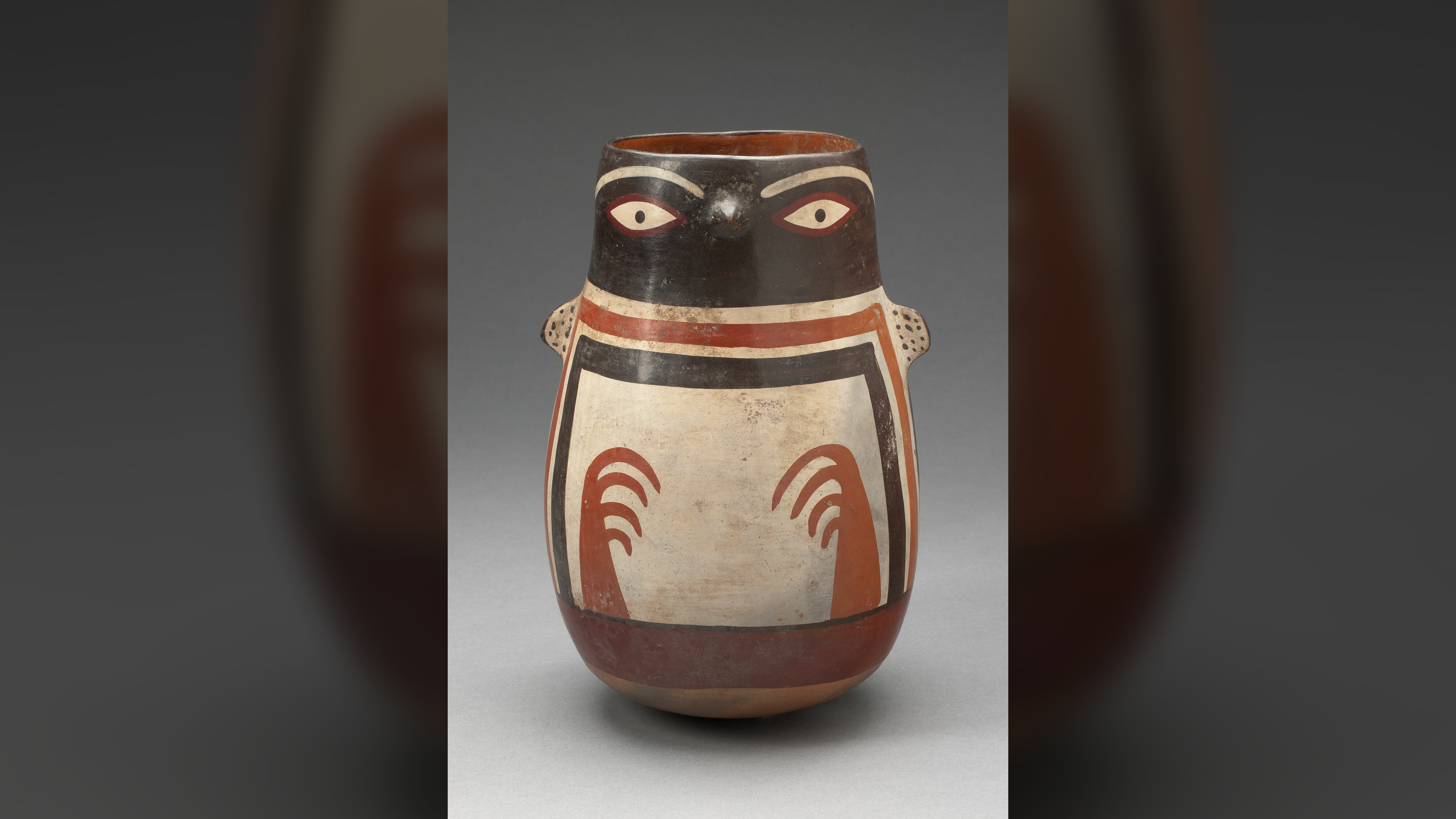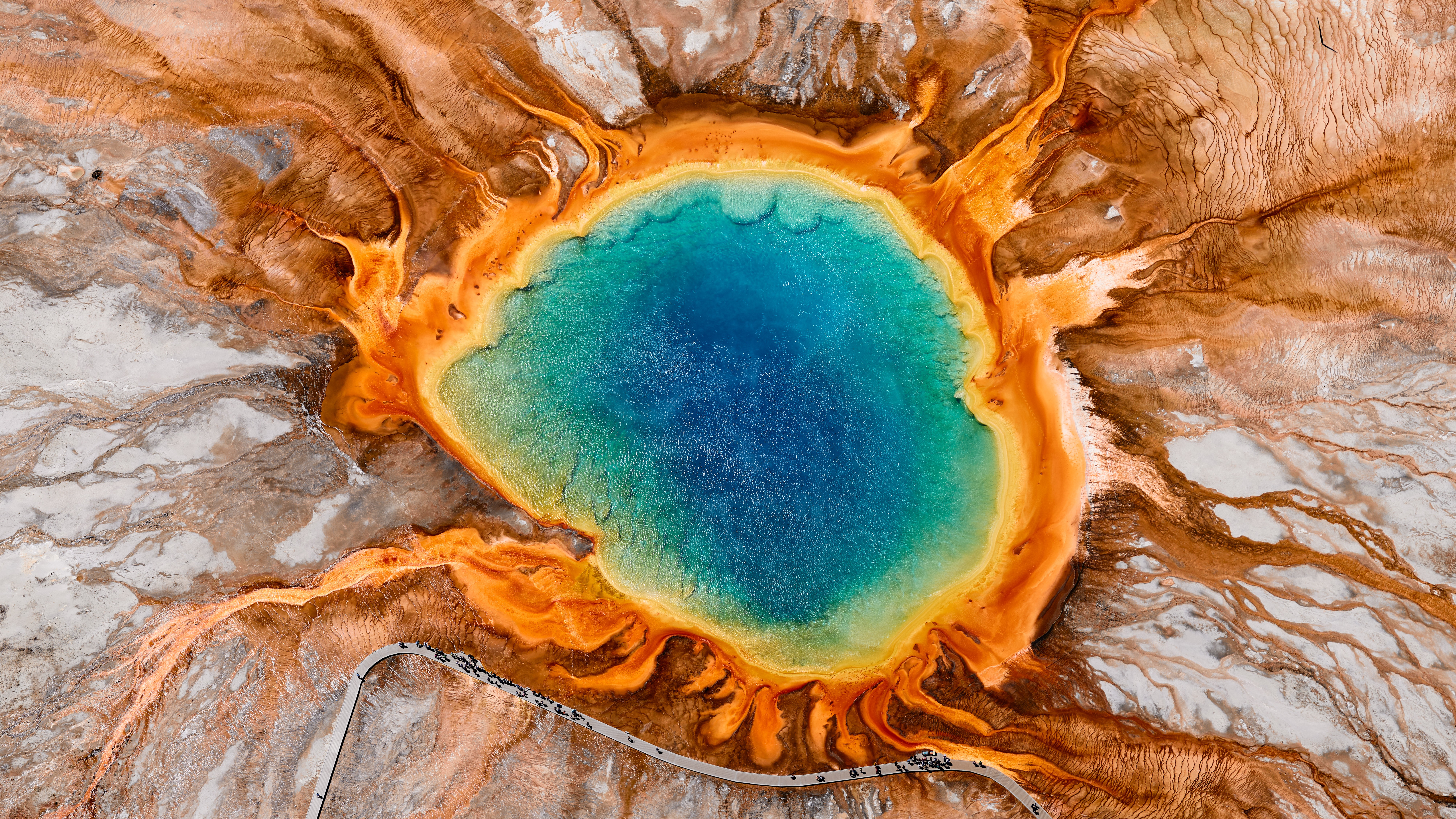Penguin Vessel: 1,600-year-old Nazca depiction of a cold-water Humboldt penguin that lives in tropical Peru
A rare penguin-shaped pot reveals the Nazca's interest in depicting the wildlife around them.

Name: Penguin Vessel
What it is: A painted ceramic vessel
Where it is from: Southwestern coast of Peru
When it was made: Between A.D. 350 and 500
The Nazca people lived in a tropical desert on the southwestern coast of Peru between 100 B.C. and A.D. 800. So how did they know what a penguin looked like, and why did they honor one with its own ceramic pot?
This painted penguin pot is in the collection of the Art Institute of Chicago. It was made about 1,600 years ago and was collected in Peru in the late 19th century. The multicolored ceramic vessel is 8.2 inches (20.8 centimeters) tall and has tiny, sculpted wings and a prominent bill.
The Nazca (also spelled Nasca) people are best known for their enormous geoglyphs — designs that are carved into the ground but are most easily seen from above. Hundreds of Nazca Lines have been discovered. They often depict images from the natural world, such as a cat, a monkey, a pelican and a killer whale. Experts don't know why the Nazca created these geoglyphs, as the culture left no written records.
But Nazca pottery also featured animals, people, mythical creatures and gods in unique, multicolored styles reminiscent of the geoglyphs, pointing to the importance of these creatures to their society.
According to the Art Institute of Chicago, this vessel is a rare depiction of the Humboldt penguin (Spheniscus humboldti), a species that lives along the Pacific Coast and is known for projectile pooping. The penguins can live along the Peruvian coast thanks to the Humboldt Current, which brings frigid water from Antarctica northward, chilling the tropical water. Humboldt penguins have thrived in Peru for centuries, but they are now vulnerable to extinction due to climate change and human encroachment.
The penguin vessel dates to a period when the Nazca were experimenting with realistic depictions of animals, including a lobster-shaped vessel and numerous examples of the "mythical killer whale." Although the orca — which features in ceramics, geoglyphs and petroglyphs — was clearly an important symbol to the Nazca, experts are unsure whether the penguin vessel held any special meaning or whether it reflects the Nazca's keen observation of the natural world around them.
Get the world’s most fascinating discoveries delivered straight to your inbox.

Kristina Killgrove is a staff writer at Live Science with a focus on archaeology and paleoanthropology news. Her articles have also appeared in venues such as Forbes, Smithsonian, and Mental Floss. Kristina holds a Ph.D. in biological anthropology and an M.A. in classical archaeology from the University of North Carolina, as well as a B.A. in Latin from the University of Virginia, and she was formerly a university professor and researcher. She has received awards from the Society for American Archaeology and the American Anthropological Association for her science writing.
You must confirm your public display name before commenting
Please logout and then login again, you will then be prompted to enter your display name.


